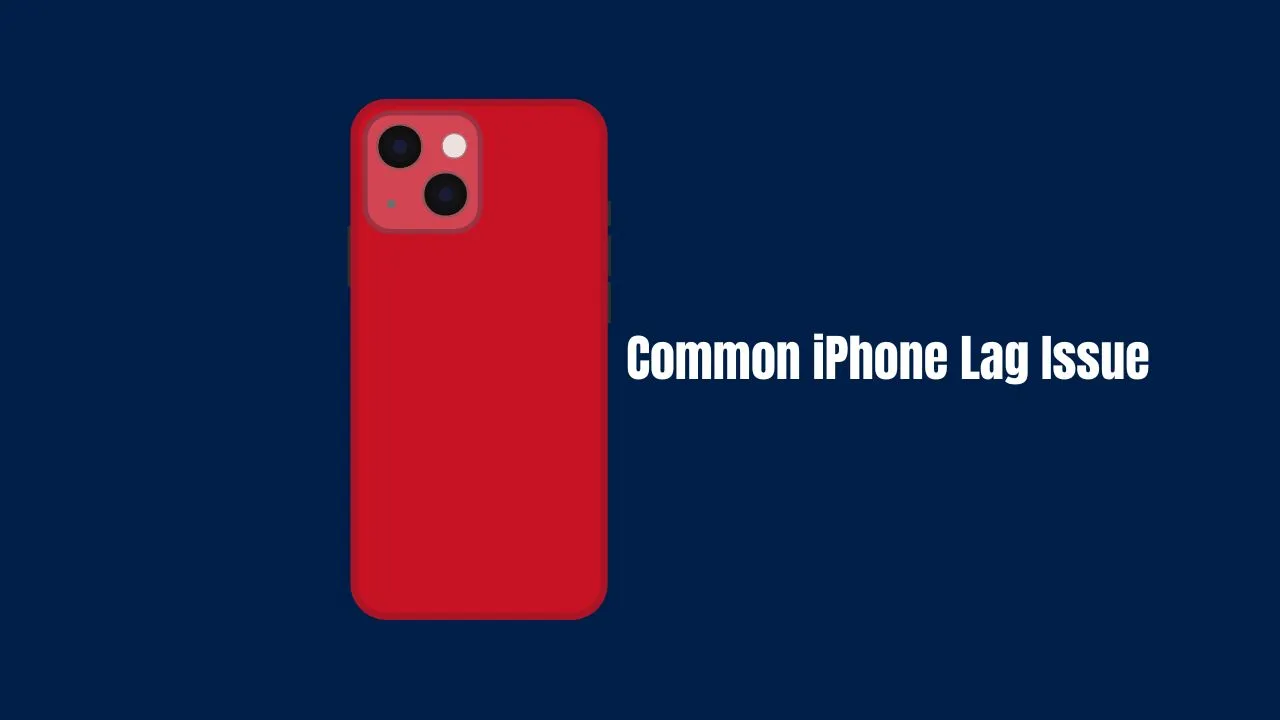The 10 common reasons behind iPhone lag issue can frustrate users. iPhones are known for their smooth performance, but even they can experience slowdowns. Understanding the causes can help you address these issues effectively. Below, we explore the most common reasons for iPhone lag and offer solutions to enhance your device’s performance.
Common Reasons for iPhone Lag
Here are the ten most frequent causes of lag on iPhones:
| Reason | Description |
|---|---|
| Outdated Software | Running an older version of iOS may lead to compatibility issues and decreased performance. |
| Full Storage | Limited storage space can hinder the device’s ability to operate smoothly. |
| Background Processes | Apps running in the background consume system resources, contributing to lag. |
| Aging Hardware | Older iPhones may struggle with newer software updates designed for more powerful devices. |
| Unstable Internet Connection | A poor connection can slow down apps that rely on the internet, causing noticeable lag. |
| Power Saving Mode | This mode reduces performance to conserve battery life, leading to slower operation. |
| Overheating | High resource demand can cause overheating, which throttles performance to protect components. |
| Battery Health Issues | A degraded battery may affect overall performance, resulting in lag during usage. |
| Junk Files Accumulation | Temporary files and app caches can accumulate over time, slowing down your device. |
| App-Specific Issues | Some apps may not be optimized for your device, causing them to lag or crash frequently. |
1. Outdated Software
Using an outdated version of iOS can lead to significant performance issues. Apple regularly releases updates that fix bugs and improve system efficiency. These updates often include optimizations that enhance speed and responsiveness.
How to Update:
- Go to Settings > General > Software Update.
- If an update is available, tap Download and Install.
- Ensure your device is connected to Wi-Fi and has sufficient battery life.
2. Full Storage
When your iPhone’s storage is nearly full, it struggles to allocate space for temporary files and data needed for smooth operation. This can result in slow app launches and sluggish overall performance.
How to Manage Storage:
- Check your storage by going to Settings > General > iPhone Storage.
- Delete unnecessary apps or large files like videos and photos.
- Consider using cloud storage services like iCloud or Google Drive for backups.
3. Background Processes
Many apps run in the background, consuming valuable system resources. This can lead to lag when switching between apps or during intensive tasks.
Managing Background Apps:
- Close unused apps by swiping up from the bottom of the screen (on Face ID models) or double-clicking the Home button (on older models).
- Limit background app refresh by going to Settings > General > Background App Refresh, and toggle off apps you don’t need running in the background.
4. Aging Hardware
Older models may not handle newer software as efficiently as they once did. As apps become more demanding, older devices may struggle, resulting in noticeable lag.
What to Consider:
- If you notice significant lag after an update, assess whether your device is compatible with the latest software.
- Upgrading to a newer model may be necessary if performance issues persist.
5. Unstable Internet Connection
A poor internet connection can cause lag in apps that require online access, such as streaming services or games. This is especially true for video calls or online gaming.
How to Improve Connectivity:
- Test your connection using a speed test app.
- Move closer to your Wi-Fi router or switch from Wi-Fi to cellular data if necessary.
- Restart your router if you experience persistent connectivity issues.
6. Power Saving Mode
When enabled, Power Saving Mode reduces your iPhone’s performance to extend battery life. While this can be useful in critical situations, it often leads to slower operation.
Turning Off Power Saving Mode:
- Check if this mode is active by going to Settings > Battery.
- Disable it if you prefer improved performance over extended battery life.
7. Overheating
High-performance tasks like gaming or video editing can cause your iPhone to overheat, leading it to throttle performance automatically as a protective measure.
Preventing Overheating:
- Avoid using resource-intensive apps for extended periods.
- Ensure proper ventilation while charging; remove any cases that might trap heat.
- Take breaks during heavy usage sessions.
8. Battery Health Issues
A degraded battery affects overall performance significantly. If your battery is unable to hold a charge effectively, it can lead to unexpected shutdowns and sluggishness.
Checking Battery Health:
- Navigate to Settings > Battery > Battery Health.
- If it’s below 80%, consider replacing it at an Apple Store or authorized service provider.
9. Junk Files Accumulation
Over time, temporary files and caches accumulate, slowing down your device’s performance. Regular maintenance helps keep your system clean and efficient.
Cleaning Up Junk Files:
- Clear Safari history and caches by going to Settings > Safari > Clear History and Website Data.
- Use third-party cleaning apps cautiously; ensure they are from reputable developers.
10. App-Specific Issues
Some applications may not be optimized for older devices or specific versions of iOS, leading to persistent lag or crashes.
Troubleshooting App Issues:
- Keep all apps updated through the App Store.
- Uninstall and reinstall problematic apps if they continue to lag.
- Report any persistent issues directly to app developers for potential fixes.
Understanding the 10 common reasons behind iPhone lag issue is essential for maintaining optimal device performance. By addressing these factors—like keeping software updated, managing storage wisely, and monitoring battery health—you can significantly enhance your iPhone’s speed and responsiveness.



